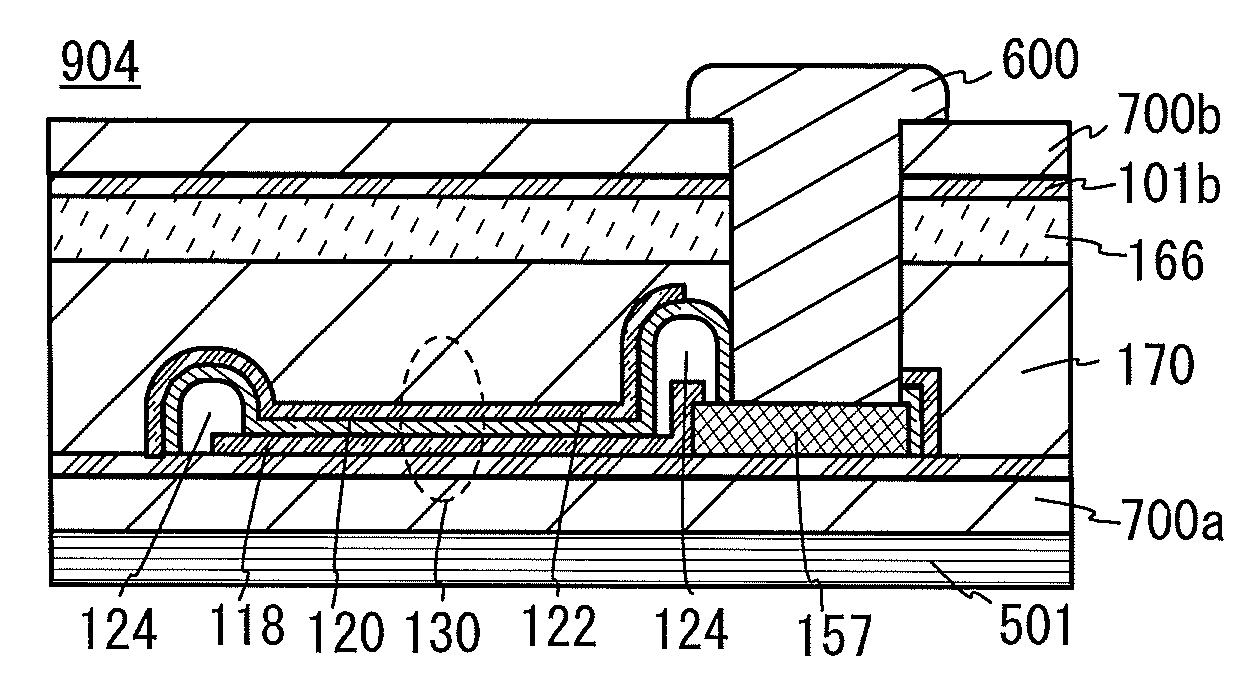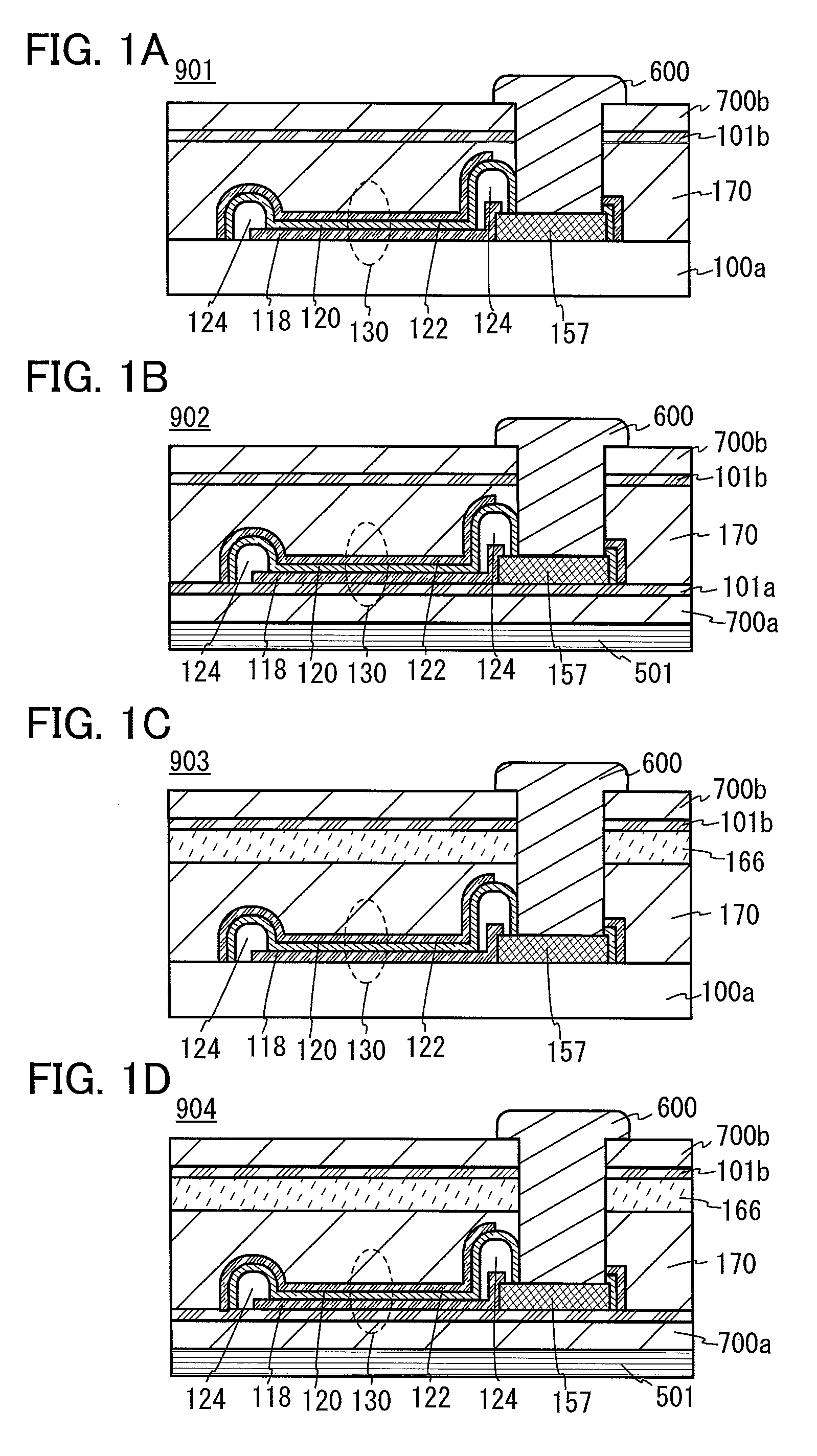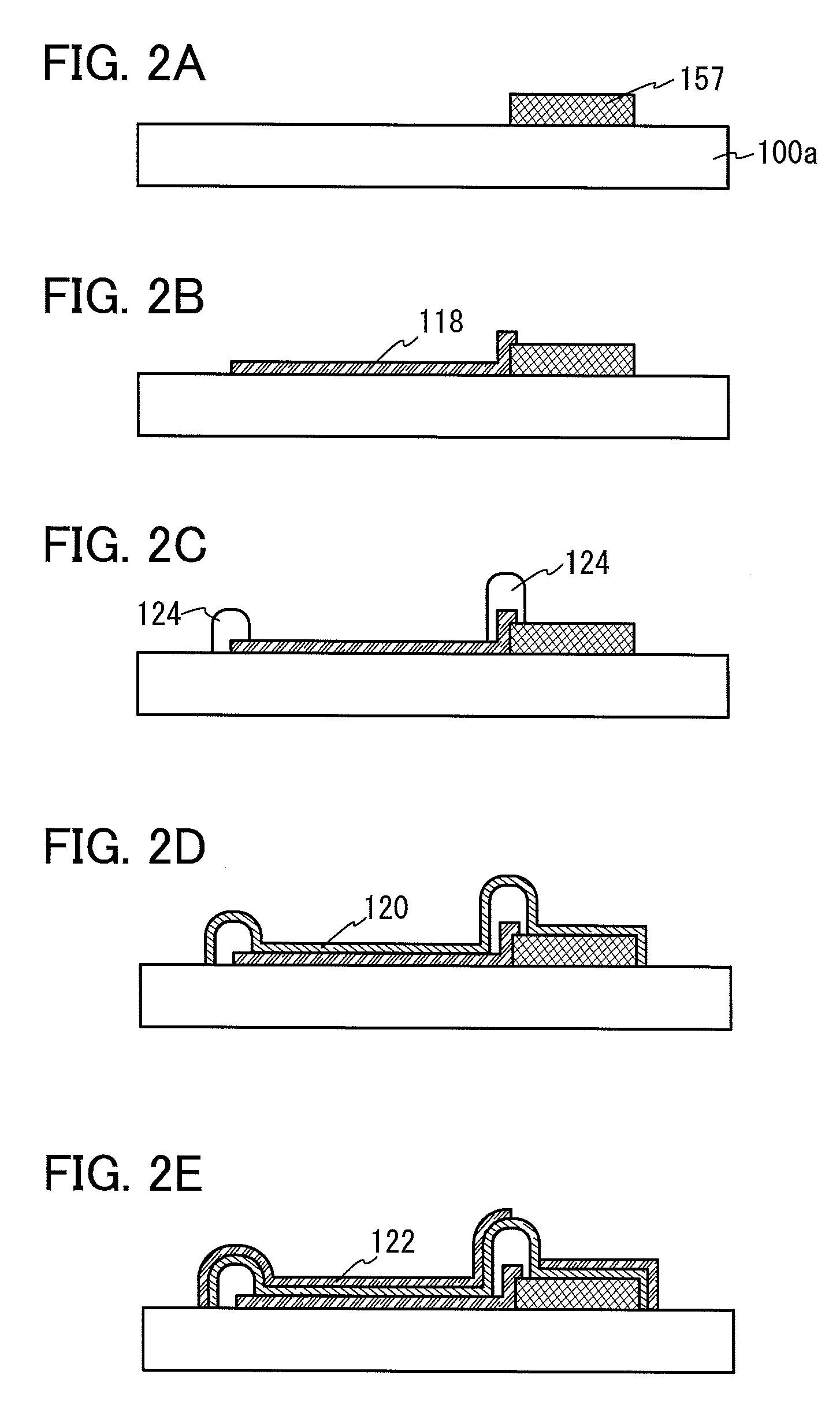Method for manufacturing light-emitting device
a technology of light-emitting devices and manufacturing methods, which is applied in the direction of semiconductor devices, organic semiconductor devices, electrical devices, etc., can solve the problems of burnt deposits, inability to form openings having a desired depth, damage to the bottom or periphery of openings,
- Summary
- Abstract
- Description
- Claims
- Application Information
AI Technical Summary
Benefits of technology
Problems solved by technology
Method used
Image
Examples
embodiment 1
[0037]FIG. 1A is across-sectional view illustrating a light-emitting device 901 which can be manufactured by a method for manufacturing a light-emitting device of one embodiment of the present invention. The light-emitting device 901 includes an electrode terminal 157 and a first electrode layer 118 over a first substrate 100a. An edge portion of the first electrode layer 118 is covered with a partition wall 124 to be insulated. An organic compound-containing layer 120 is in contact with at least the top surfaces of the first electrode layer 118 and the partition wall 124. There is a part in which the organic compound-containing layer 120 does not exist over the electrode terminal 157. A second electrode layer 122 is in contact with at least a top surface of the organic compound-containing layer 120. The second electrode layer 122 does not exist over the electrode terminal 157. An adhesive layer 170 is in contact with the second electrode layer 122. The adhesive layer 170 does not e...
modification example 1
of Method for Manufacturing Light-Emitting Device
[0071]FIG. 1B is a cross-sectional view of a light-emitting device 902 which can be manufactured by a method for manufacturing a light-emitting device of one embodiment of the present invention. The light-emitting device 902 includes a flexible substrate 501 and the second organic layer 700b, and is thus flexible. The method for manufacturing the light-emitting device 902 is different from the method for manufacturing the light-emitting device 901 in that the first separation layer 101a is formed between the first substrate 100a and the light-emitting element 130.
[0072]In this modification example, in the case of using a glass substrate as the first substrate 100a, an insulating layer such as a silicon oxide film, a silicon oxynitride film, a silicon nitride film, or a silicon nitride oxide film is preferably formed between the first substrate 100a and the first separation layer 101a, in which case contamination due to an alkali metal...
modification example 2
of Method for Manufacturing Light-Emitting Device
[0087]FIG. 1C is a cross-sectional view of a light-emitting device 903 which can be manufactured by a method for manufacturing a light-emitting device of one embodiment of the present invention. In the light-emitting device 903, a coloring layer 166 is provided between the adhesive layer 170 and the second separation layer 101b. The other structures are the same as those of the light-emitting device 901; thus, the above embodiment can be referred to for the other structures. Therefore, only a method for forming the coloring layer 166 will be described below.
[0088]The formation steps of the light-emitting device 901 (FIGS. 2A to 2E) can be referred to for the steps up to and including the formation of the second electrode layer 122.
(Coloring Layer)
[0089]The coloring layer 166 is formed on the second separation layer 101b on the second substrate 100b. Note that in FIG. 6C, the second separation layer 101b and the coloring layer 166 are ...
PUM
 Login to View More
Login to View More Abstract
Description
Claims
Application Information
 Login to View More
Login to View More - R&D
- Intellectual Property
- Life Sciences
- Materials
- Tech Scout
- Unparalleled Data Quality
- Higher Quality Content
- 60% Fewer Hallucinations
Browse by: Latest US Patents, China's latest patents, Technical Efficacy Thesaurus, Application Domain, Technology Topic, Popular Technical Reports.
© 2025 PatSnap. All rights reserved.Legal|Privacy policy|Modern Slavery Act Transparency Statement|Sitemap|About US| Contact US: help@patsnap.com



